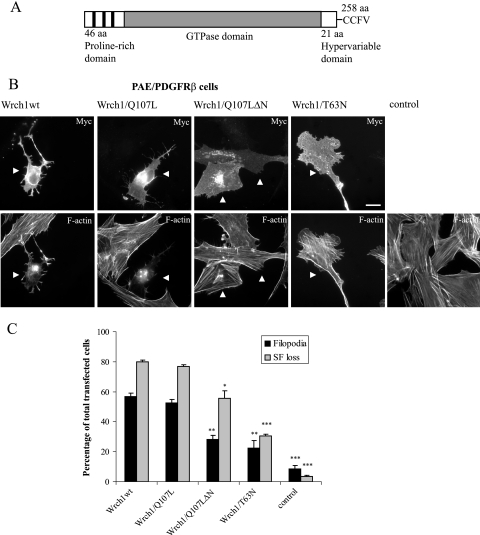FIG. 1.
Wrch1 is a Cdc42-like member of the Rho GTPases. (A) Schematic representation of the domains present in the human Wrch1: N-terminal proline-rich motifs, the Cdc42-like GTPase domain, and the C-terminal CAAX box. aa, amino acids. (B) Wrch1 (Wrch1wt) and Wrch1(Q107L) induce the formation of filopodia and dissolution of stress fibers. Wrch1 or Wrch1(Q107L) was transiently transfected into PAE/PDGFRβ cells. Myc-tagged Wrch1 and Wrch1(Q107L) were visualized with a rabbit anti-Myc antibody followed by an AMCA-conjugated anti-rabbit antibody. Filamentous actin was visualized by Alexa Fluor 488-conjugated phalloidin. The arrowheads mark transfected cells. (C) Quantification of the phenotypes observed in panel B was performed by microscopy analysis and scored as filopodium formation (filopodia) or stress fiber dissolution (SF loss). Stress fiber loss was scored when cells had less than one-fifth of the stress fiber content seen in the control cells. This is actually rather clear, since a majority of Wrch1-expressing cells retain only few and often disintegrated filamentous actin-containing structures. The values represent analyses of at least 100 transfectants in three independent experiments. The statistics analysis was carried out using Student's t test to compare the phenotypes induced by Wrch1wt to the phenotypes induced by Wrch1(Q107LΔN) and Wrch1(T63N). * represents P values of <0.05, ** represents P values of <0.01, and *** represents P values of <0.001.

